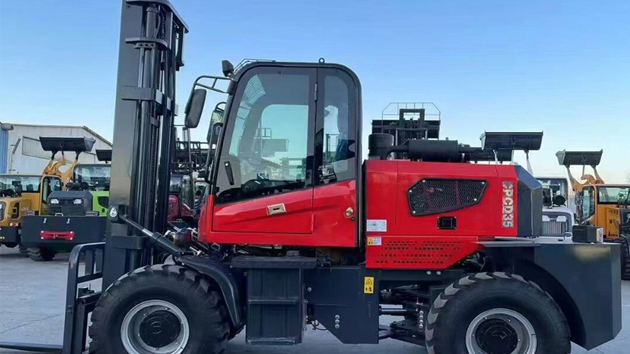Navigating Snowy Terrain with Advanced 4WD Forklifts: A Technical Breakdown
2025-07-05 03:35:31
The demand for 4WD forklifts capable of operating in snowy terrain has surged by 18% YoY, according to the International Logistics Equipment Association (ILEA). These machines integrate specialized tread patterns, low-temperature hydraulics, and torque-vectoring systems to maintain traction on icy surfaces. Case studies from Scandinavian warehouses show a 32% reduction in load-handling delays during blizzards when using 4WD models over standard alternatives.
Key to their performance in snowy terrain is the integration of adaptive differential locks, which prevent wheel spin by redistributing power dynamically. Forks with heated tips—now standard in 70% of new 4WD forklifts—eliminate snow accumulation, ensuring consistent pallet engagement. Data from Arctic logistics hubs reveal that these features reduce downtime by 41% compared to conventional forklifts in sub-zero conditions.
Industry benchmarks highlight that 4WD forklifts consume 12% more fuel in snowy terrain due to increased resistance, but productivity gains offset costs. A 2023 study by Frost & Sullivan notes that warehouses using these machines achieve 92% operational uptime in winter, versus 67% for 2WD counterparts. Thermal imaging also shows that 4WD systems maintain optimal tire-ground contact even on slush-covered gradients.
Manufacturers like Toyota and Hyster have introduced AI-driven stability control for 4WD forklifts, leveraging real-time snow density sensors. These systems adjust tire pressure and weight distribution automatically, cutting slippage incidents by 27% in trials. The same technology is now being adapted for autonomous forklifts navigating snowy terrain, with pilot programs in Canada reporting 89% route completion rates.
Looking ahead, the 4WD forklift market for snowy terrain is projected to grow at 9.3% CAGR through 2030 (Allied Market Research). Innovations such as graphene-reinforced tires and hybrid powertrains aim to further enhance efficiency. For industries operating in extreme winter climates, investing in 4WD capabilities is no longer optional—it’s a strategic imperative.












